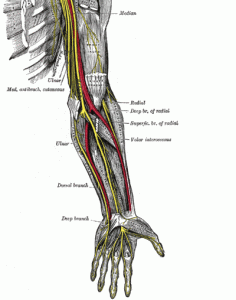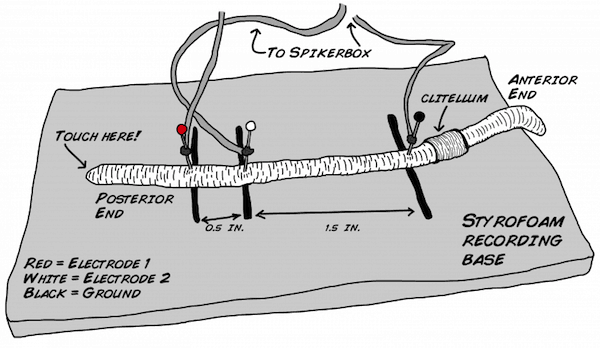
High school students at PGSS got to learn about earthworm neurons this summer. Dr. Carrie Doonan and Dr. Emily Drill from Carnegie Mellon University over-watched as students hooked up earthworms to special speaker boxes. Flat Rosie was lucky enough to get to drop in while they worked!
Learning about Neurons.
Our neurons send information from our bodies to our brains. Feeling pain, moving our arms or sensing pressure; neurons are our bodies data messengers.

How fast can you get information? The speed that neurons send data is called conduction velocity. The neural conduction velocity changes on what type of information is being set. For example, pressure travels between 3-30 m/s. Muscles send information at up to 120 m/s. That’s almost 270 miles per hour! It’s so fast it feels like the moment you think about moving your leg forward it is already there.
How long would it take for your leg to move? Let’s find out!
The average male height is 5’10”. That is 177cm or 1.7m
Let’s do the math: 1.7m/(120m/s)=0.014s
Only 0.014 seconds to have a signal from your brain reach your feet!
Earthworm Neurons as the Building Blocks of Knowledge.
Compared to humans, earthworms are simple creatures. They have a nerve cord containing medial and lateral giant fibers. With three pins and a spiker box we can measure how fast the neurons are firing. Touch one end, then measure the time between speaker spikes. With the distance between pins, we can determine the velocity of earthworm neurons (which is distance/time with a direction).

Learning how our environment affects our nerves
The students in Dr. Doonan’s lab first studied the normal properties of earthworm neurons. Then the fun began. They investigated how inhaled or ingested chemicals affected the conduction velocity. They learned how caffeine, nicotine or MSG change our data messengers. Even temperature can play a role, and they looked at that too!
